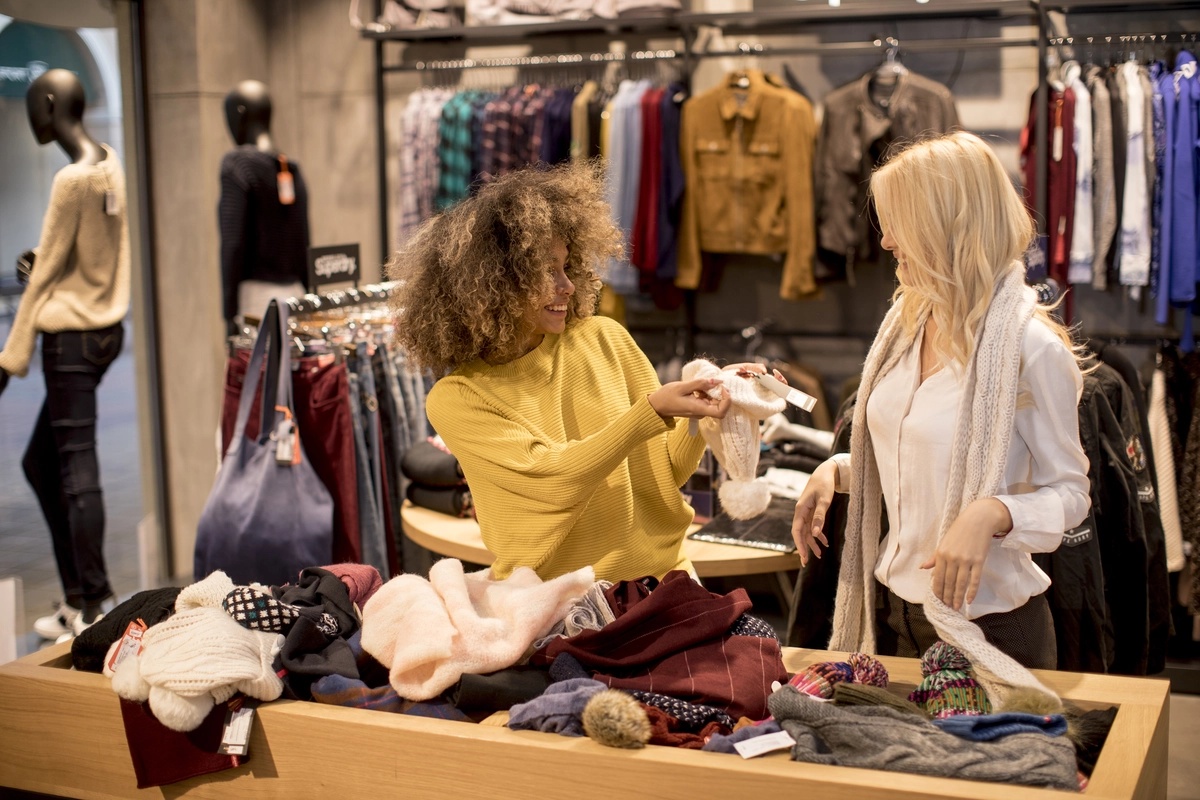Shopping Addiction: Signs, Causes, & Treatment Options


“Retail therapy” and buying new things is a common way to self-soothe, or to fill a void of some sort. If left unchecked, the compulsion to buy can lead to financial struggles, hurt relationships, and damaged mental health — but through therapy and financial counseling, you can finally overcome the irresistible urge to buy. Learn more about symptoms and treatment options for shopping addiction, and call The Forge Recovery Center if you or a loved one require professional support.
What Is Shopping Addiction?
Shopping addiction, also known as compulsive buying disorder, is a behavioral addiction characterized by an overwhelming urge to shop and spend money, often resulting in negative consequences such as financial problems, relationship difficulties, and emotional distress. Individuals with shopping addiction may experience a sense of euphoria while making purchases, followed by feelings of guilt or remorse.
This addictive behavior can lead to a cycle of compulsive shopping to alleviate negative emotions, creating a pattern of dependency on shopping as a coping mechanism. Treatment for shopping addiction may involve therapy, support groups, and financial counseling to address the underlying issues driving the addictive behavior.
Normal Shopping Vs. Compulsive Buying Disorder
When it comes to shopping addictions, it’s crucial to distinguish between occasional shopping and compulsive buying. Normal shopping involves purchasing items you need or want within your budget. On the other hand, compulsive shopping disorder revolves around an uncontrollable urge to shop excessively, often leading to financial problems.
Understanding how shopping addiction differs from regular consumer behavior is essential. While occasional shopping can be a fun and harmless activity, compulsive buying disorder can negatively impact your finances, relationships, and overall well-being. It’s important to recognize when shopping transitions from a leisure activity to a compulsive habit.
To identify signs of compulsive buying disorder, pay attention to recurring patterns such as constantly buying items you don’t need, feeling guilty after making impulsive purchases, or using shopping as a way to cope with stress or negative feelings. These behaviors may indicate a deeper issue that requires attention.
Defining “Retail Therapy”
"Retail therapy" is a term used to describe the act of shopping as a way to alleviate stress, boost mood, or improve one's emotional state. While it may provide temporary relief, it can also contribute to shopping addiction. People may turn to shopping as a coping mechanism to deal with negative emotions or situations, leading to excessive spending and financial problems. The temporary high from purchasing items can become addictive, creating an addictive cycle where individuals feel the need to shop more in order to maintain emotional stability.

Warning Signs of a Shopping Addiction
There are three red flags to look out for in identifying compulsive shoppers: an emotional attachment to shopping, a loss of control over buying decisions, and a fixation on shopping that overshadows other responsibilities. Let’s explore these signs and symptoms further:
Emotional Attachment
When dealing with shopping problem, you might develop a strong emotional bond with shopping. Your emotions become closely tied to the act of purchasing items, providing a temporary escape or relief from underlying emotional issues. This emotional connection can lead to compulsive spending behaviors as you seek comfort or distraction through shopping.
In terms of battling shopping addiction, individuals often turn to shopping as a coping mechanism for various emotional challenges. The rush of positive emotions experienced during shopping can temporarily mask feelings of anxiety, stress, or loneliness. However, this reliance on retail therapy can deepen the emotional attachment to shopping, making it difficult to break free from compulsive buying patterns.
The role of emotions in driving compulsive buying behavior cannot be understated. For a shopping addict, intense emotions like excitement or guilt may trigger impulsive spending sprees. These emotional highs and lows associated with shopping can further reinforce the addictive cycle, perpetuating the need for constant gratification through purchases.
Loss of Impulse Control
As someone grappling with a shopping problem, you may face significant challenges in controlling impulses related to purchasing goods. The urge to buy items can become overpowering, leading to reckless spending habits and financial instability. This loss of impulse control can have detrimental effects on your overall financial well-being, potentially resulting in debt and monetary struggles.
The impaired impulse control experienced by compulsive shoppers can significantly impact their ability to make sound financial decisions. The allure of acquiring new possessions overrides rational thinking, leading to impulsive purchases that are often unnecessary or excessive. This lack of restraint contributes to the cycle of compulsive buying behavior, fueling the addiction further.
Understanding how loss of impulse control plays a pivotal role in fostering compulsive buying behavior is crucial when addressing shopping addiction. By recognizing the triggers that prompt impulsive spending and implementing strategies to regain control over impulses, individuals can take steps towards breaking free from the grips of excessive shopping habits.
Preoccupation with Shopping
Individuals with a shopping addiction often find themselves consumed by thoughts of shopping on a regular basis. The preoccupation with acquiring new items or seeking out deals becomes a dominant force in your daily life, overshadowing other responsibilities and activities. This fixation on shopping can disrupt relationships, work performance, and overall well-being.
Constantly dwelling on thoughts related to shopping can interfere with various aspects of your life, diverting attention away from essential tasks and priorities. The obsessive nature of preoccupation with shopping manifests in behaviors such as constantly browsing online stores, visiting malls frequently, or constantly seeking out sales and discounts. This all-encompassing focus on shopping highlights the intensity of obsession present in individuals struggling with shopping addiction.
Are You Struggling with Mental Health or Addiction?
We Can Help. Call Us Now!
CALL: 877-839-1772
Treatment Options for Shopping Addiction
Shopping addiction is most commonly treated with a combination of therapy and financial counseling, but treatment centers are also popular for their end-to-end care and individualized treatment plans. Here are the common treatment options for individuals struggling with compulsive buying disorder:
Therapy
Therapy is a clinical approach that plays a crucial role in addressing shopping addiction. Through therapy, you can work on understanding and managing the underlying psychological factors driving your excessive shopping habits. Therapists help you explore the root causes of your addiction, providing strategies to develop healthier coping mechanisms.
Financial Counseling
Financial counseling offers essential support for individuals struggling with shopping addiction. Counselors provide tailored advice on budgeting, saving, and setting financial goals to help you overcome compulsive buying tendencies. By working with a financial counselor, you can create a sustainable plan to improve your financial well-being and break free from the cycle of excessive shopping.
Treatment Centers
If you’re struggling with shopping addiction, seeking help from addiction treatment centers can be a transformative step towards recovery. Treatment centers offer a range of services such as individual therapy sessions, group counseling, and educational workshops focused on overcoming addictive behaviors. By immersing yourself in a treatment center's program, you can benefit from a holistic approach to healing that addresses both the emotional and practical aspects of battling shopping addiction.
What Causes Shopping Addiction?
Shopping addiction is thought to be caused by a mix of psychological factors and social influences. People with underlying anxiety or depressive disorders, for example, may shop compulsively to fill an emotional need, while social factors like peer pressure can push them to make impulsive purchases.
Psychological Factors
Psychological factors play a crucial role in the development of shopping addiction. Your inner emotional state and mental health can significantly impact your shopping habits. Individuals with underlying psychological issues such as anxiety, depression, or low self-esteem are more prone to compulsive buying behavior, potentially using shopping to fill a void of self-esteem or loneliness. Shopping can also become a way to self-medicate anxious or depressive symptoms.
Social Influences
Social influences also contribute to the development of shopping addiction. Your friends, family, and society at large can influence your shopping behavior. Peer pressure and societal norms often push individuals towards excessive spending and impulsive purchases. Resisting these social influences is key to maintaining healthy shopping habits. By being mindful of external pressures and setting boundaries, you can avoid falling into the trap of compulsive buying.
Are You Struggling with Mental Health or Addiction?
We Can Help. Call Us Now!
CALL: 877-839-1772
How Emotions Can Drive Shopping
Shopping addiction typically arises out of an emotional attachment to shopping. The act of shopping can bring comfort, or fill an emotional void by delivering a temporary sense of satisfaction, which can quickly spiral into an addictive cycle. Let’s take a look at how these motivations play into buying behavior:
Seeking Comfort
When you feel overwhelmed or stressed, you may turn to shopping as a way to seek comfort and emotional relief. The act of buying things can temporarily distract you from negative emotions and provide a sense of pleasure. This coping mechanism often stems from the desire to escape reality and experience a momentary high.
Shopping serves as a quick fix for dealing with stress and anxiety, offering instant gratification that can be addictive. However, it's essential to recognize that relying on shopping for emotional comfort is not a sustainable solution. Instead of turning to material possessions, you can explore healthier alternatives such as practicing mindfulness, engaging in hobbies, or seeking support from friends and family.
Filling Voids
Individuals struggling with shopping addiction may use the act of shopping to fill emotional voids in their lives. By purchasing new items, they experience a temporary sense of fulfillment and satisfaction that masks deeper emotional issues. This behavior creates a cycle where shopping becomes a means of escaping feelings of emptiness or dissatisfaction.
The temporary relief gained from filling voids through shopping is fleeting and often leads to increased cravings for more purchases. To break this cycle, it's crucial to address the underlying emotional needs driving the addiction. By seeking therapy, practicing self-reflection, and building healthier coping mechanisms, individuals can reduce their reliance on shopping as a way to fill emotional gaps.

Coping Strategies for Shopping Addiction
While it’s important to seek professional help when overcoming shopping addiction, it’s also crucial that you pick up your own coping strategies. Two ways to cope with compulsive buying are taking budget management more seriously, and being mindful of your buying habits:
Budget Management
When dealing with shopping addiction, effective budget management is crucial. By setting a budget, you can limit impulsive purchases and regain financial stability. Creating a budget allows you to track your expenses and identify areas where you tend to overspend. Stick to your budget by avoiding unnecessary purchases and focusing on essential items only.
To overcome shopping addiction, it's essential to develop the discipline to adhere to your budget consistently. Set clear financial goals and prioritize saving over excessive spending. By monitoring your expenses regularly, you can stay accountable and avoid falling back into old habits. Budget management empowers you to take control of your finances and break free from compulsive shopping tendencies.
Mindful Shopping
Practicing mindful shopping involves being present and aware of your purchasing decisions. Before making a purchase, ask yourself if the item is a necessity or simply a fleeting desire. Embrace mindfulness by focusing on the present moment and evaluating whether buying the product aligns with your values and goals. By cultivating mindfulness, you can avoid impulse buys and make more intentional choices.
Mindful shopping encourages you to consider the long-term impact of your purchases on your finances and well-being. Instead of seeking temporary gratification through shopping sprees, prioritize mindful consumption that brings genuine value to your life. By adopting a mindful approach to shopping, you can reduce impulsivity, minimize clutter, and foster a healthier relationship with material possessions.
Are You Struggling with Mental Health or Addiction?
We Can Help. Call Us Now!
CALL: 877-839-1772
Shopping Addiction Prevalence
Shopping addiction is more common than you’d think, especially with the rise of online shopping and the convenience it brings. We’ve gathered the latest data to give you an idea of the prevalence, contributing factors, and importance of raising awareness about compulsive buying disorder:
Global Impact
Shopping addiction affects individuals worldwide, with studies showing a significant rise in this behavioral disorder over the years. One study reported that approximately 5.8% of people have compulsive buying disorder. In various countries, the prevalence of shopping addiction has been on an upward trend, impacting people from diverse backgrounds.
Gender Disparities & Dual Diagnoses
Shopping addiction is evidently more common among women than men, with one study concluding that the majority of those addicted to shopping were women (80% of participants). On the topic of dual diagnoses, other studies found that 95% of compulsive buyers have some type of mood disorder, 80% suffer from an anxiety disorder, and nearly 50% exhibit impulse control disorders.
Contributing Factors
The modern consumer culture, coupled with easy access to online shopping platforms, plays a crucial role in fueling shopping addiction. The constant exposure to advertisements, discounts, and limited-time offers can exacerbate impulsive buying behaviors.
Awareness Importance
Raising awareness about shopping addiction is essential to provide support and resources for those struggling with this issue. By educating yourself and others about the signs and consequences of shopping addiction, you can help create a more understanding and empathetic environment for affected individuals.
Closing Thoughts
Now that you understand the ins and outs of shopping addiction, recognize the warning signs, explore treatment options, and delve into its causes and coping strategies, you're equipped to tackle this issue head-on.
Remember, emotions can often be the driving force behind excessive shopping habits. By implementing the coping strategies discussed and seeking professional help if needed, you can regain control over your shopping impulses.
Take charge of your well-being by being mindful of your shopping habits and seeking support when necessary. Whether it's through therapy, support groups, or self-help techniques, remember that overcoming shopping addiction is a journey that requires determination and effort. Your path to recovery starts with acknowledging the issue and taking proactive steps towards a healthier relationship with shopping.
Are You Struggling with Mental Health or Addiction?
We Can Help. Call Us Now!
CALL: 877-839-1772
Treatment for Shopping Addiction in Orange County
At The Forge Recovery Center, we fully understand the challenges of shopping addiction and where it often stems from, whether it’s a coping mechanism or a way to fill a void in your life. We also recognize how compulsive buying can diminish your quality of life, from financial hardships and broken relationships to waning mental health. But we’re here to remind you that you’re not alone — and treatment is available to help you overcome the compulsion to buy, buy, buy.
At The Forge Recovery Center, our mental health experts are ready to guide you toward a more controlled lifestyle through therapy, compassionate care, and support groups if necessary.
If you or a loved one are struggling with shopping addiction, call us today to learn more about our treatment pathways.



